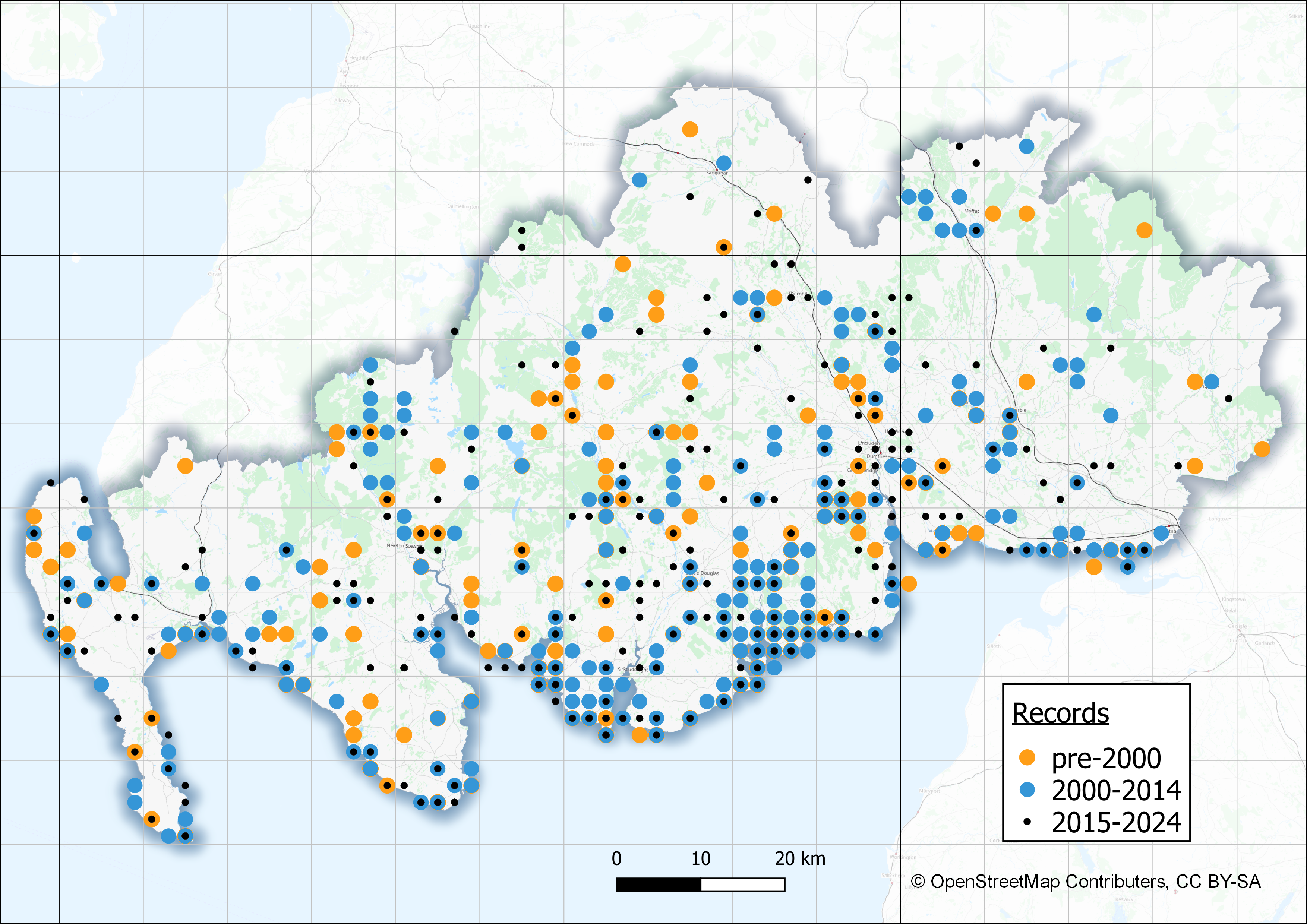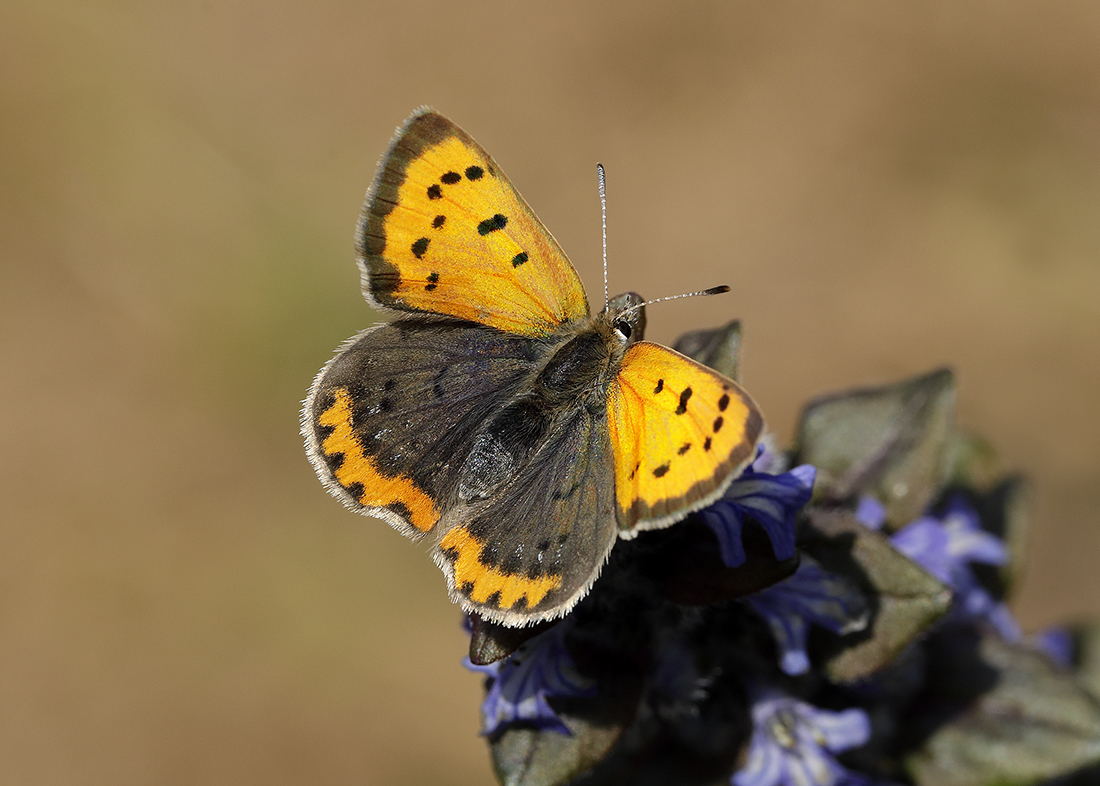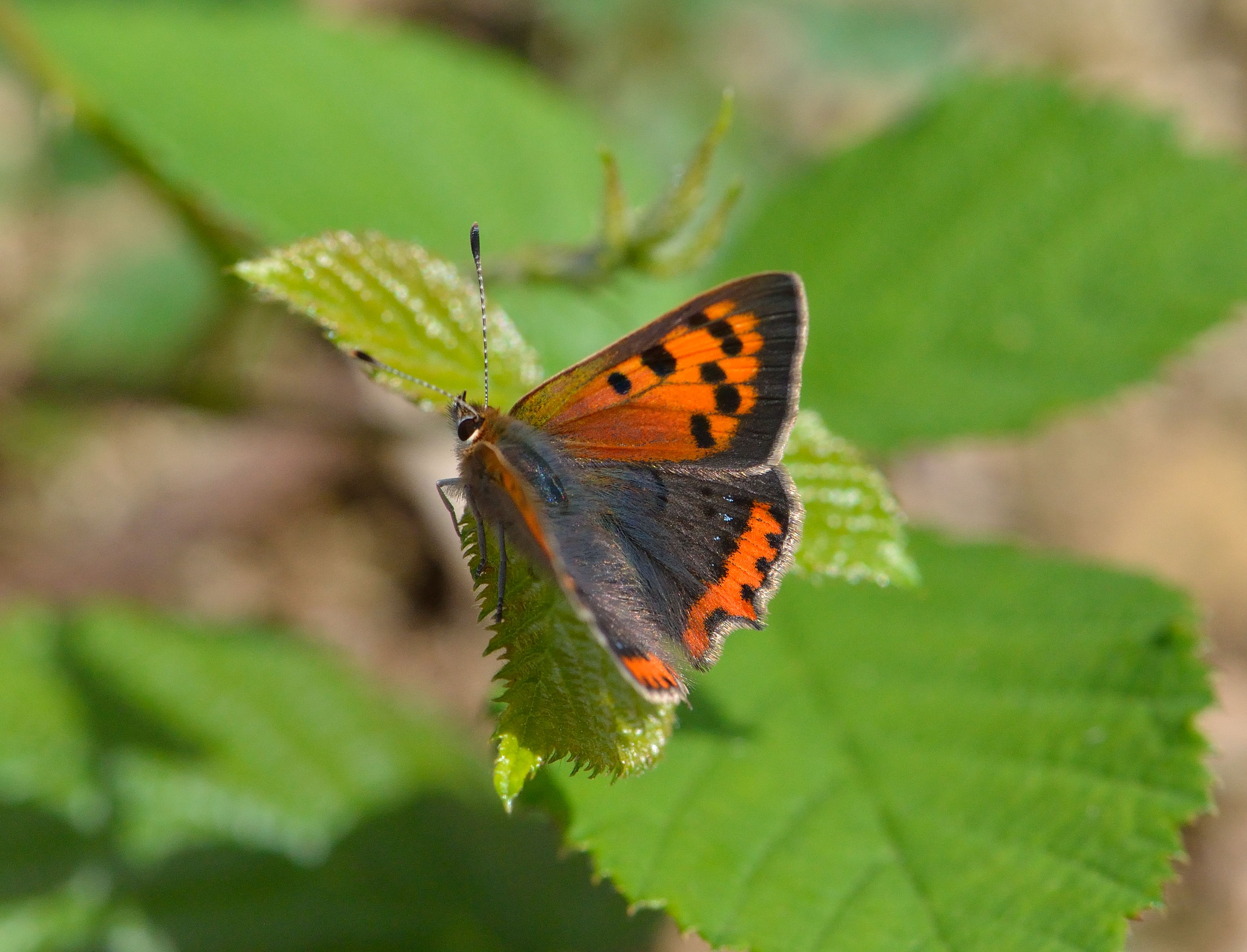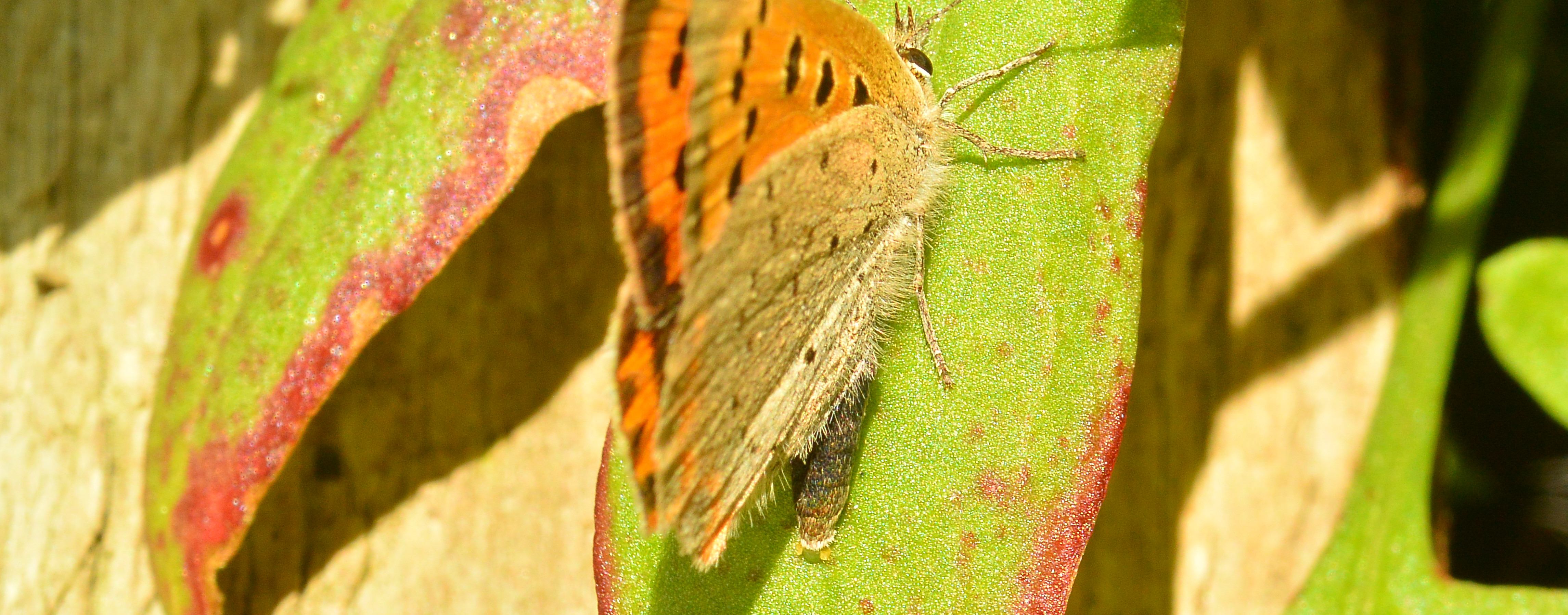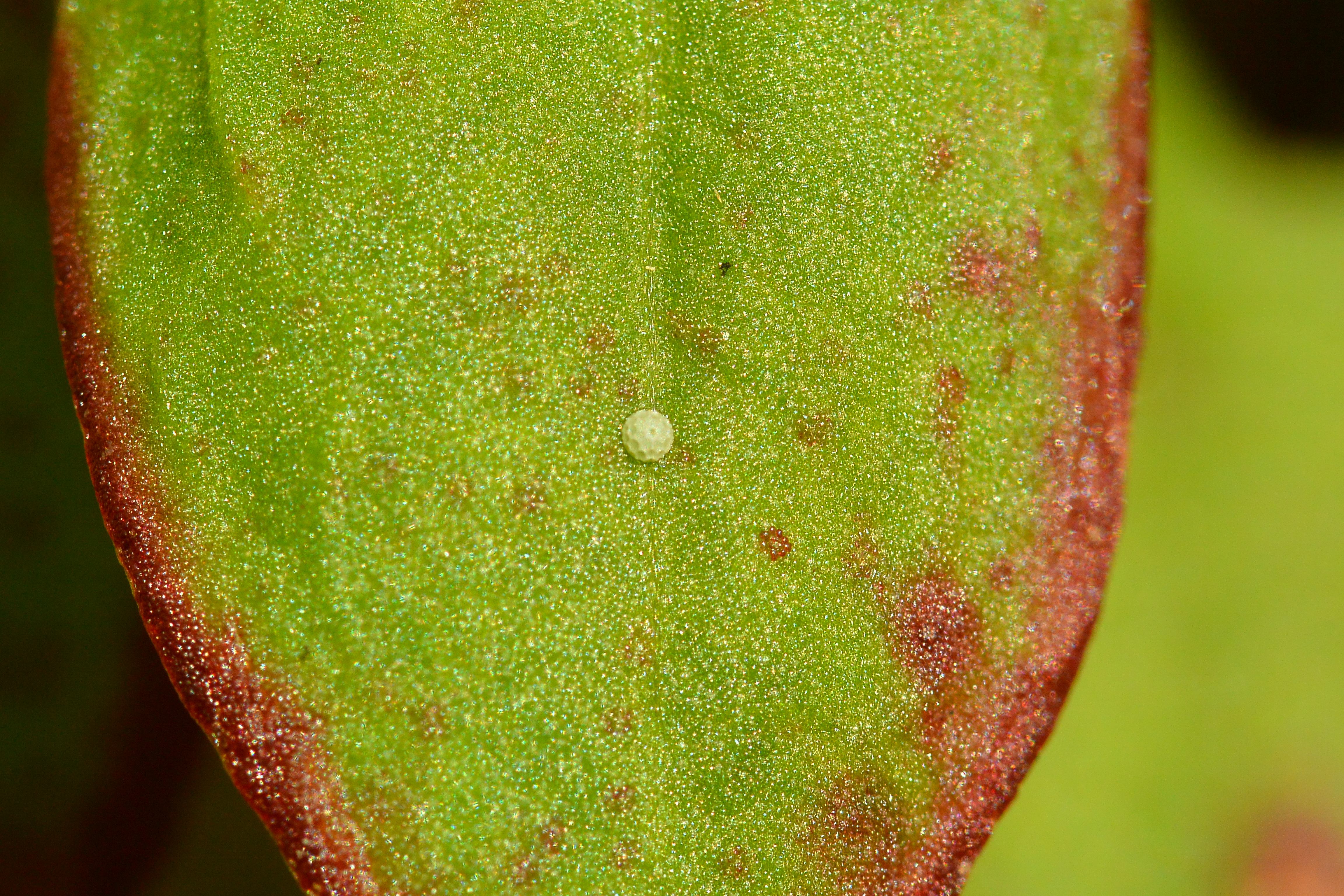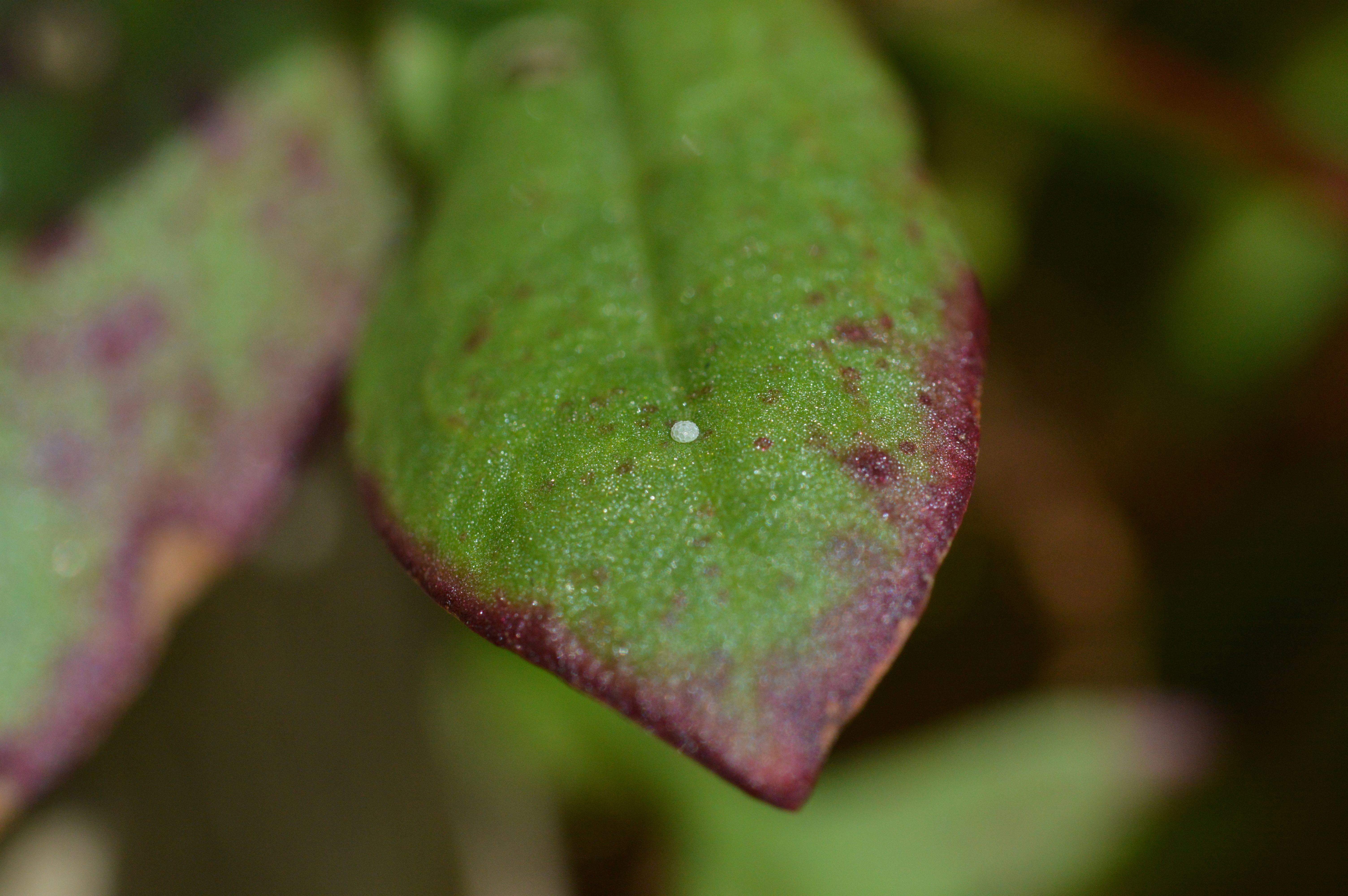The Small Copper is widely distributed over most of the region, but is most often encountered in urban areas, ‘brownfield’ sites and along the coast, and less often seen in the hills.
As a widespread, relatively mobile species with no lack of foodplant in the countryside, one might expect it to be doing well but the Small Copper has undergone declines in numbers in recent years, all through its range in Dumfries and Galloway. It is rarely seen in large numbers.
Identification
Despite being one of our most distinctive and beautiful butterflies, the Small Copper can easily go unseen, as it often flies fast and low. There are no butterflies or day-flying moths that could be mistaken for the Small Copper.
Life cycle & flight period
The spring and summer broods can overlap, so it is possible to see adults from late April through to late September, but most records usually come from August. Those seen in late September and even into early October might be from a third brood. Overwinters as a caterpillar.
Larval foodplant
Small Copper caterpillars feed on Sheep’s Sorrel on acidic habitats, and Common Sorrel and docks on more neutral soils. All are very common plants in the countryside.
Habitats
This little butterfly may be found in a wide range of sunny, sheltered habitats that support short to medium height turf such as field edges, woodland rides, dune grassland and urban greenspaces. It has a relatively short proboscis so is limited to taking nectar from plants with short corollas such as Dandelion and Creeping Buttercup in late spring, while the summer brood favours Common Ragwort, Common Fleabane, thistles and Yarrow.

